A village that literally weaves magic is Mayong, 35 km east of Guwahati and adjoining Pabitora Wildlife Sanctuary. Blessed with a magical ambience, Mayong is an occult village where reside at least 120 wizards and witch doctors oja or bej in the local languagewho have a spell for every ailment or misfortune, and can beat the ghosts out of the possessed.
Remnants of old temples on hillocks surrounding Mayong are probably a pointer to its tantric or black magic past. The place has four important temples Kechaikhaiti shrine of Burha Mayong, Narashinha Ashram of Hiloikhunda, Ganesh temple of Hatimuria and Shiva shrine of Kachashila and a community museum showcasing ancient magic literature and relics. (Contact: Mayong Vilage Museum & Research Centre, mobile: 9854479746)
Almost equidistant from Guwahati, to the northwest, is Sualkuchi, the expansive village of silk weavers and traders often referred to as Manchester of the East. It was established 370 years ago as a model of the modern-day export promotion zone, but sericulture began ??lourishing here in the 4th century BC when it was called Swarnakuchi (golden zone). The name is attributable to muga (derived from the worm Antheraea assama) or the gold-hued silk peculiar to Assam.
Sualkuchis weavers have been churning out exotic indigenous silks the silvery-creamy paat (derived from Bombyx mori) and the warm-as-wool eri or endi (from Attacus ricini) apart from muga and the rare mejankori (from Litsea citrate). Life here revolves around the never-ending tick-a-tack-tick music of at least five looms per each of some 4,000 households. The rhythm induces four million square metres of silk fabric worth Rs 800 million annually.
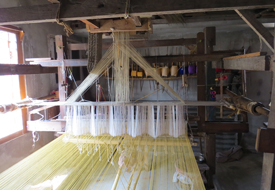 | 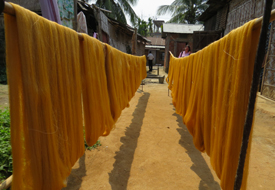 | 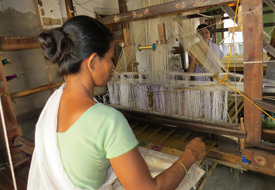 |
This translates into more than 101 metric tonnes of muga, 820 tons of eri and 12 tons of paat. The yarns are made from worms reared on 19,300 hectares of mulberry and other ecosensitive plants across Assam.
Off the road to Sualkuchi is Gandhamou, a rural tourism destination that off ers local cuisine on the bank of river Brahmaputra besides a farming experience (Mobile: 9859291081).
Nearby, holy town Hajo is surrounded by villages that excel in floriculture. The Moria community in the area also lords over Assams bell metal industry.
In eastern Assam, 70 km from Dibrugarh is Sasoni Merbeel (near Naharkatiya), an ecotourism project around an ox-bow lake that is blessed with natural beauty, including 250 species of flora, about 200 species of birds both resident and migratory, and several other species of fauna including many rare reptiles and insects. Visitors can either put up with local villagers or make a day-long trip, during which they may also spot eopards, monkeys, deer, rabbits, turtles and monitor lizards among other wildlife.
 | 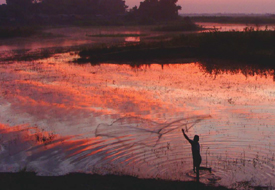 | 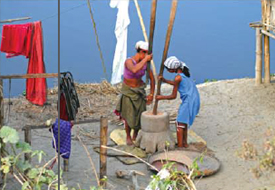 |
Among birds one can see white-winged wood ducks, spot-billed ducks, common teals, lesser adjutant storks, chestnut bitterns, egrets, crow pheasants, bluebreasted quails, black crested bulbuls, golden fronted leaf birds, black drongos, red-wattled lapwings, and vultures. The villagers will take one around, showing the places, off ering black tea and til-pitha, tell stories, sing local songs, and also offer place to stay.